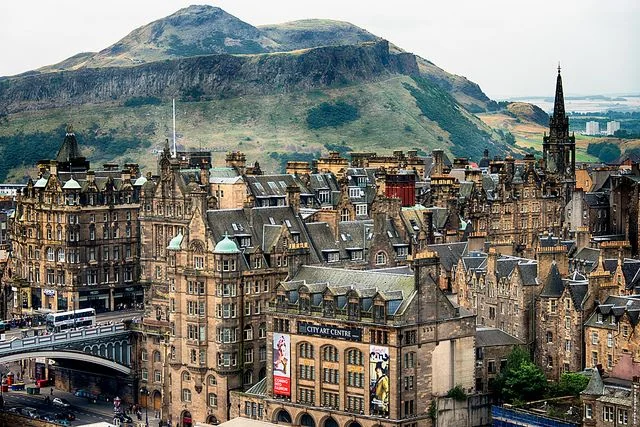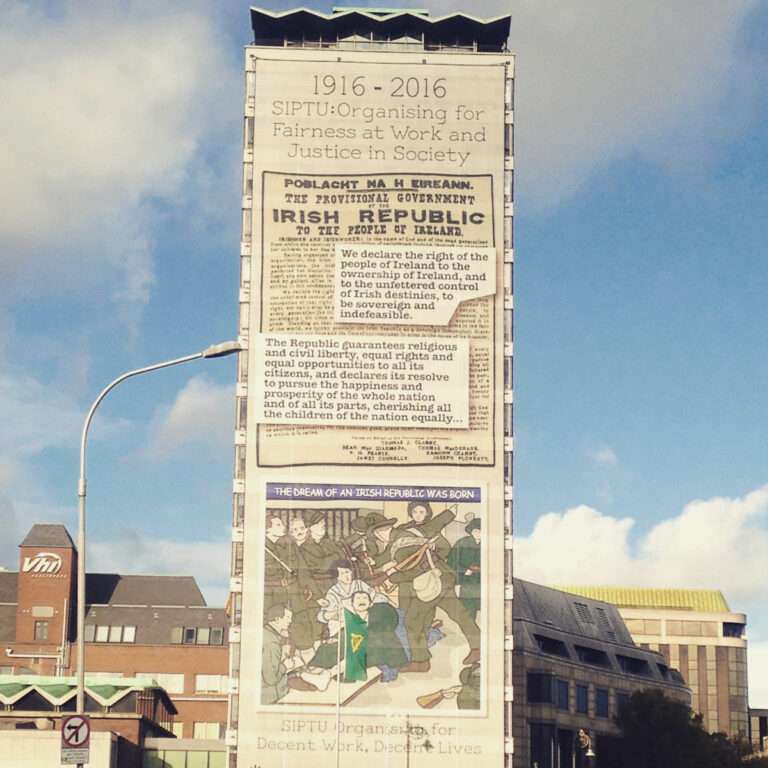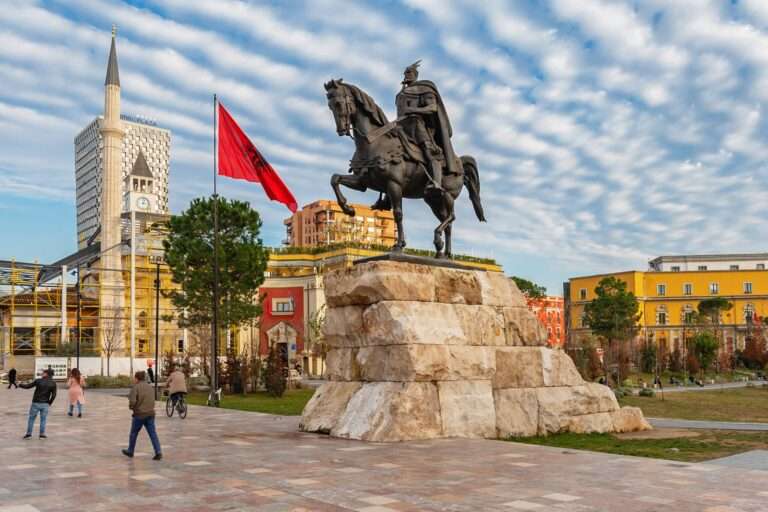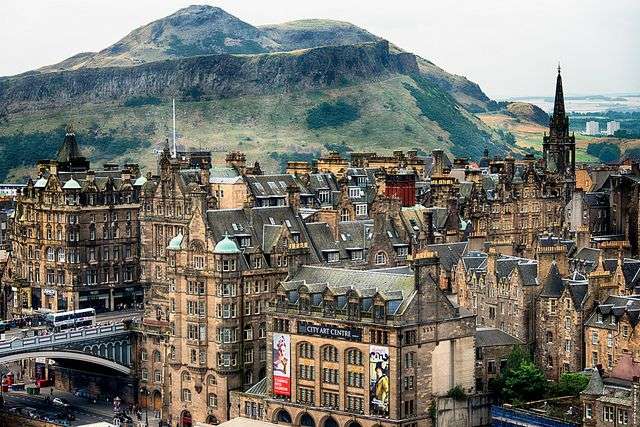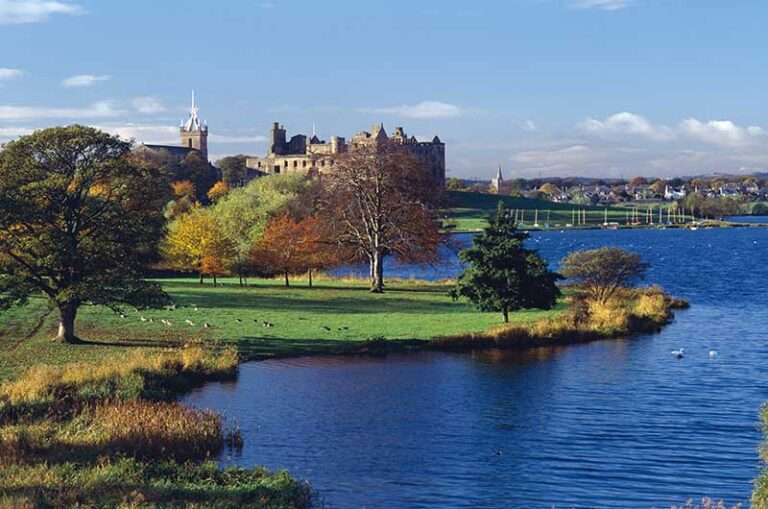Edinburgh, the capital of Scotland, is a city that takes ancient history and combines it with a modern vibe. Known for its architecture, cultural scene, and welcoming atmosphere, Edinburgh is a fantastic destination for digital nomads looking for a unique and inspiring place to work remotely. From its reliable infrastructure to its arts community, Edinburgh offers many opportunities to live, work, and explore. If you’re considering making Edinburgh your next stop as a digital nomad, read on for everything you need to know to make the most of your time in this amazing city.
Can I be a digital nomad in Edinburgh?
Yes, you can definitely be a digital nomad in Edinburgh! Although more expensive than Aberdeen and Glasgow, Edinburgh has everything you need to thrive as a remote worker. With fast and reliable internet, numerous coworking spaces, and a supportive community of like-minded professionals, you’ll find it easy to get your work done while enjoying all that Edinburgh has to offer. The city’s tech scene is booming, with plenty of networking opportunities for those looking to make professional connections. Plus, Edinburgh’s mix of old-world charm and modern conveniences creates a unique backdrop that inspires creativity and productivity.
Where is Edinburgh, Scotland Located?
Edinburgh is situated in the southeastern part of Scotland, along the southern shore of the Firth of Forth. This estuary leads into the North Sea, making Edinburgh a coastal city with stunning views and a refreshing sea breeze. It’s strategically located near other major Scottish cities, such as Glasgow, and is a gateway to exploring the Highlands and other picturesque areas of Scotland. Edinburgh’s location offers both the tranquility of nature and the buzz of city life, making it an attractive base for digital nomads who want to experience the best of both worlds.
Is Edinburgh Part of the UK or Scotland?
Edinburgh is the capital of Scotland, which is one of the four countries that make up the United Kingdom (UK), alongside England, Wales, and Northern Ireland. While Scotland has its own distinct legal and educational systems, it is politically part of the UK. This means that while you’re in Edinburgh, you’re within the jurisdiction of UK laws, and the British Pound is the currency in use. Understanding this distinction is important, especially when it comes to travel, finances, and legal matters during your stay.
What is the Best Way to Get to Edinburgh, Scotland from London?
Traveling from London to Edinburgh offers several options, depending on your preference for speed, comfort, and scenery. The fastest way is by air, with numerous flights available from London’s major airports (Heathrow, Gatwick, and Luton) to Edinburgh Airport. The flight takes about 1.5 hours, and with frequent services, you can easily find a flight that fits your schedule.
If you prefer to see more of the British countryside, the train is an excellent alternative. The London to Edinburgh train journey takes about 4.5 hours, traveling along the East Coast Main Line. This route offers stunning views of the English and Scottish landscapes, including the rugged coastline near Berwick-upon-Tweed. Trains depart from London Kings Cross station and arrive at Edinburgh Waverley station, conveniently located in the heart of the city.
For those who enjoy road trips, driving from London to Edinburgh is another option, although it’s a longer journey, typically taking 7-8 hours without significant stops. This allows for flexibility to explore various towns and attractions along the way.
What’s the Closest Airport to Edinburgh, Scotland?
Edinburgh Airport (EDI) is the closest and most convenient airport for the city. Located about 8 miles (12 km) west of the city center, Edinburgh Airport is the busiest in Scotland, serving millions of passengers each year. It offers direct flights to a wide range of destinations across the UK, Europe, and even North America, making it an accessible hub for international travelers.
Getting from Edinburgh Airport to the city center is easy and convenient. The Edinburgh Trams provide a direct service from the airport to various points in the city, including Haymarket and Princes Street, in about 30 minutes. Alternatively, the Airlink 100 bus is another popular option, offering a 24/7 service that takes around 25 minutes to reach the city center. Taxis and rideshares are also available for a more direct but pricier route.
What Language is Spoken in Edinburgh?
English is the primary language spoken in Edinburgh, making it easy for most international travelers to communicate. The local accent, known as the Scottish accent, may take a little getting used to, but it’s generally easy to understand, especially in a city as cosmopolitan as Edinburgh. Besides English, you might also hear Scots and Scottish Gaelic, though these are less commonly spoken in daily life.
Scots is a Germanic language closely related to English, while Scottish Gaelic is a Celtic language historically spoken in the Highlands and Western Isles. While most signs and official documents are in English, you may occasionally see bilingual signage, especially in cultural or historical contexts.
Is Edinburgh Worth Visiting?
Edinburgh is absolutely worth visiting, whether you’re a history buff, a culture enthusiast, or just looking for a beautiful place to spend some time. The city is renowned for its stunning architecture, from the medieval streets of the Old Town to the elegant Georgian avenues of the New Town. The historic center, which includes Edinburgh Castle, the Royal Mile, and Holyrood Palace, is a UNESCO World Heritage Site, offering countless opportunities for exploration.
Edinburgh is also famous for its festivals, particularly the Edinburgh Festival Fringe, the world’s largest arts festival, which takes place every August. This month-long event transforms the city into a bustling hub of creativity, with performances ranging from theater and comedy to music and dance.
Beyond the festivals, Edinburgh offers a wealth of museums, galleries, parks, and natural attractions. Whether you’re climbing Arthur’s Seat for panoramic views of the city, strolling through the Royal Botanic Garden, or exploring the city’s many hidden closes and wynds, there’s always something new to discover in Edinburgh.
What is the Best Month to Visit Edinburgh?
The best time to visit Edinburgh largely depends on your interests and what you want to experience. August is the busiest and most vibrant month, thanks to the Edinburgh Festival Fringe and other concurrent festivals, such as the Edinburgh International Festival and the Royal Edinburgh Military Tattoo. However, this also means that the city is crowded, and prices for accommodation and attractions can be higher.
If you prefer a quieter visit with fewer tourists, consider visiting in May or September. May offers pleasant weather, blooming gardens, and the city’s annual Beltane Fire Festival, which celebrates the arrival of summer. September still enjoys mild weather, and the summer crowds have mostly dispersed, making it a great time to explore the city at a more relaxed pace.
For those who enjoy festive cheer, December is a magical time to visit Edinburgh. The city’s Christmas markets, festive lights, and Hogmanay celebrations (Scotland’s famous New Year’s festivities) create a warm and joyful atmosphere, despite the chilly weather.
How Long Should I Stay in Edinburgh?
The ideal length of stay in Edinburgh depends on your work commitments and how much of the city and surrounding areas you want to explore. A short visit of 3-4 days is enough to see the main attractions, such as Edinburgh Castle, the Royal Mile, and Arthur’s Seat. However, if you want to dive deeper into the city’s culture, history, and local life, a week or more is recommended.
For digital nomads, staying in Edinburgh for a month or longer allows you to fully immerse yourself in the city while maintaining a productive work schedule. This extended stay gives you the flexibility to explore beyond the tourist hotspots, take day trips to nearby destinations like the Highlands, and participate in local events and activities. I spent a total of six months in Scotland bouncing around Edinburgh, Glasgow, and Aberdeen.
What is Edinburgh Weather Like?
Edinburgh’s weather is famously unpredictable, with the possibility of experiencing all four seasons in a single day. Generally, the city has a temperate maritime climate, meaning that temperatures are relatively mild year-round, but it can also be wet and windy.
Spring (March to May): Spring in Edinburgh is mild, with temperatures ranging from 5°C to 15°C (41°F to 59°F). The city begins to bloom with flowers, especially in parks and gardens, making it a lovely time to visit, though showers are common.
Summer (June to August): Summer is the warmest season, with temperatures typically between 15°C and 20°C (59°F and 68°F). July and August are the warmest months, but rain is still possible. The longer daylight hours (up to 17 hours in June) make it an ideal time for outdoor activities.
Autumn (September to November): Autumn sees temperatures dropping gradually from 15°C to 7°C (59°F to 45°F). The city’s parks and surrounding countryside are beautiful with fall colors, and the weather is generally mild, though you should expect occasional rain and wind.
Winter (December to February): Winter in Edinburgh is cold, with temperatures ranging from 0°C to 5°C (32°F to 41°F). Snow is possible but not common. The shorter daylight hours (around 7 hours in December) can make the days feel brief, but the festive atmosphere in December brightens up the city.
No matter when you visit, it’s wise to pack layers, a waterproof jacket, and sturdy shoes to be prepared for the ever-changing weather.
Is Edinburgh Safe For Digital Nomads?
Edinburgh is one of the safest cities in the UK, with a low crime rate and a generally friendly and welcoming atmosphere. Areas like New Town and Bruntsfield are particularly safe, but like with any major city, it’s important to stay aware of your surroundings, especially in crowded areas or at night. Overall, Edinburgh is a place where I felt secure walking around, even at night. You can feel secure as you explore.
The city center, where most tourists and digital nomads spend their time, is well-lit and lively, even after dark. The public transport system is reliable and safe, and the presence of police and community officers ensures that any issues are quickly addressed.
For solo travelers, including solo female travelers, Edinburgh is a great destination. The city’s compact size and walkable streets make it easy to get around, and there are plenty of cafes, coworking spaces, and communal areas where you can meet other travelers or locals.
Is Edinburgh Expensive For Digital Nomads?
Edinburgh is a relatively expensive city, particularly in comparison to other parts of Scotland. The cost of living is higher than in many other UK cities, though it’s still more affordable than London. Accommodation, especially in the city center, is one of the biggest expenses for digital nomads. The average monthly cost of living, including rent, ranges from £1,400 to £2,000.
During peak seasons, such as the Edinburgh Festival Fringe in August and the Christmas period, prices for hotels, Airbnb, and even short-term rentals can surge significantly. If you’re planning to stay in Edinburgh during these times, it’s best to book your accommodation well in advance.
Dining out can also be pricey, especially in popular tourist areas like the Royal Mile and Princes Street. However, Edinburgh has a wide range of dining options, from affordable street food and casual eateries to high-end restaurants, allowing you to manage your budget effectively.
Grocery shopping and cooking your meals can help you save money, and there are plenty of supermarkets and local markets where you can find fresh and reasonably priced food. Public transportation is affordable, and many of the city’s attractions, including museums and parks, are free to enter.

What Currency is Used in Edinburgh?
The currency used in Edinburgh, as in the rest of the UK, is the British Pound Sterling (GBP). The currency symbol is £, and it is divided into 100 pence (p). While the majority of transactions in Edinburgh are conducted in pounds, credit and debit cards are widely accepted, and many businesses also accept contactless payments through mobile devices.
ATMs are readily available throughout the city, and most of them allow you to withdraw cash using international cards. Be aware that some ATMs may charge a fee for withdrawals, especially those located in convenience stores or tourist areas. This is why I recommend USAA if you qualify as ATM fees are returned.
When paying with a card, you may be given the option to pay in your home currency instead of pounds. While this might seem convenient, it’s usually better to pay in pounds to avoid unfavorable exchange rates and additional fees.
Intracity Travel: How to Get Around in Edinburgh
Edinburgh is a compact and walkable city, which makes getting around a breeze. The city’s public transport system is efficient, reliable, and covers most of the areas you’ll want to visit.
Walking: Walking is one of the best ways to explore Edinburgh. The city’s historic center, including the Old Town and New Town, is filled with narrow streets, hidden closes, and pedestrian-friendly areas that are best experienced on foot.
Key walking routes include:
- The Royal Mile: Stretching from Edinburgh Castle to Holyrood Palace.
- Princes Street Gardens: Offering scenic views and green space.
Buses: Edinburgh’s bus network is extensive and operated primarily by Lothian Buses. The buses are frequent, clean, and cover most parts of the city, including the airport. A single fare is affordable, and you can buy tickets directly from the driver using cash or contactless payment. Day tickets are also available, offering unlimited travel on buses for a full day.
Popular routes include:
- Route 100: Airlink bus from Edinburgh Airport to the city center.
- Route 22: From Ocean Terminal in Leith to Gyle Centre, passing through the city center.
- Route 30: Connecting Musselburgh and Clovenstone, covering key areas like Princes Street and the Royal Mile.
Trams: The Edinburgh Trams provide a quick and convenient way to travel between the city center and Edinburgh Airport, with several stops along the route. Trams are modern, comfortable, and a good alternative to buses, especially for those staying or working near the tram lines.
Popular stops include:
- Edinburgh Park: Business park and transport interchange.
- Murrayfield Stadium: Home of Scottish rugby.
- St Andrew Square: Close to major shopping and transport hubs.
Taxis and Rideshares: Taxis are widely available in Edinburgh, with black cabs being the most common. They can be hailed on the street, booked via phone, or found at taxi ranks around the city. Rideshare services like Uber and Bolt are also available, offering a convenient way to get around, particularly late at night or during bad weather.
Common routes include:
- City center to Edinburgh Airport.
- City center to Leith for dining and nightlife.
Cycling: Edinburgh is becoming increasingly bike-friendly, with more cycling paths and dedicated lanes being introduced across the city. You can rent a bike from several shops or use bike-sharing schemes like Just Eat Cycles, which allows you to pick up and drop off bikes at various points around the city.
Popular cycling routes include:
- The Water of Leith Walkway: A peaceful route through the city along the river.
- Innocent Railway Path: A historic railway path converted into a cycling and walking route.
Driving: While it’s possible to rent a car in Edinburgh, driving in the city center can be challenging due to narrow streets, one-way systems, and limited parking. If you’re planning day trips or exploring areas outside the city, a car can be useful, but within Edinburgh, it’s often easier to rely on public transport or walk.
Where to Stay in Edinburgh, Scotland?
Choosing where to stay in Edinburgh depends on your budget, preferences, and how close you want to be to the city’s main attractions and coworking spaces.
Old Town: The Old Town is the heart of Edinburgh’s history, with landmarks like Edinburgh Castle, the Royal Mile, and St Giles’ Cathedral all within walking distance. Staying here puts you right in the middle of the action, with plenty of restaurants, bars, and shops nearby. However, accommodation in the Old Town can be more expensive, especially during peak seasons.
New Town: Just north of the Old Town, the New Town offers a different vibe with its Georgian architecture, wide streets, and elegant squares. It’s home to many boutique hotels, serviced apartments, and upscale restaurants. The New Town is also where you’ll find Princes Street, Edinburgh’s main shopping thoroughfare, and some of the city’s best coworking spaces.
Leith: For a more local experience, consider staying in Leith, Edinburgh’s historic port district. Leith has a more laid-back, bohemian atmosphere, with a growing number of cafes, bars, and independent shops. It’s slightly removed from the city center, but well-connected by bus, and offers more affordable accommodation options.
West End: The West End is another great option, particularly for those looking for a quieter, more residential area. It’s close to the city center, with easy access to attractions like the Scottish National Gallery of Modern Art and Dean Village. The West End also has a number of stylish hotels and guesthouses.
Southside: The Southside is a diverse and vibrant neighborhood known for its student population, thanks to its proximity to the University of Edinburgh. It’s a great area to stay if you’re looking for budget accommodation and a lively atmosphere. The Southside is also home to several parks, including the Meadows, a popular spot for picnics and outdoor activities.
Digital Nomad Accommodation Options in Edinburgh
Finding the right accommodation is key to enjoying your time as a digital nomad in Edinburgh. The city offers a wide range of options to suit different budgets and preferences, whether you’re looking for short-term stays or a more permanent base.
VRBO: VRBO is a popular choice for digital nomads in Edinburgh, offering a variety of accommodations from private rooms in shared apartments to entire flats and houses. You can find options in all parts of the city, whether you prefer the historic charm of the Old Town or the modern amenities of the New Town. VRBO is especially convenient for short to medium-term stays, and many hosts offer discounts for longer bookings.
Serviced Apartments: For those who prefer a bit more comfort and convenience, serviced apartments are an excellent option. These apartments come fully furnished and include amenities like housekeeping, Wi-Fi, and often a concierge service. Some popular serviced apartment providers in Edinburgh include Fraser Suites, Staycity Aparthotels, and Adagio Aparthotel. Serviced apartments are ideal for digital nomads who want a home-like environment with the added perks of hotel services.
Co-Living Spaces: Co-living spaces are becoming increasingly popular among digital nomads, offering a communal living experience with like-minded individuals. These spaces typically include private bedrooms and shared common areas like kitchens, lounges, and coworking spaces. Co-living options in Edinburgh, such as The Collective, provide a sense of community and often organize social events and networking opportunities for residents.
Hostels: If you’re on a tight budget or enjoy the social aspect of traveling, hostels can be a great option. Edinburgh has a wide range of hostels, from boutique options like The Baxter Hostel to larger, more social ones like St Christopher’s Edinburgh. Many hostels offer private rooms in addition to dormitories, and some even have dedicated workspaces with free Wi-Fi, making them a viable option for digital nomads.
Hotels: Edinburgh is home to a wide variety of hotels, from budget-friendly options to luxury stays. For those who prefer the comfort and convenience of hotel amenities, staying in a hotel might be the perfect choice. The Balmoral, located in the heart of the city, offers a luxury experience with stunning views, while budget hotels like Motel One provide modern, affordable accommodation with central locations. Many hotels also offer business centers, meeting rooms, and reliable Wi-Fi, making them suitable for digital nomads.
Short-Term Rentals: If you’re planning to stay in Edinburgh for a few months, consider renting a flat through local letting agencies or websites like Rightmove and Zoopla. Short-term rentals provide more stability than Airbnb, and you can find options that fit your budget and location preferences. Keep in mind that rental prices can vary significantly depending on the area and the time of year, with central locations typically commanding higher rates.
Guesthouses and Bed & Breakfasts: For a more traditional experience, guesthouses and B&Bs offer a cozy and often more personal stay. Many guesthouses in Edinburgh are located in historic buildings, adding to the charm of your stay. While not as flexible as other options, they often provide breakfast, making it easier to start your day without having to find a café first.
University Accommodation (Seasonal): During the summer months, when students are away, many of Edinburgh’s universities rent out their accommodation to visitors. This can be an affordable option, especially during the festival season when prices for other accommodations skyrocket. University halls typically offer basic amenities, with options ranging from single rooms to shared flats.
When choosing your accommodation, consider factors like proximity to coworking spaces, public transportation links, and the availability of essential amenities. No matter your preference, Edinburgh’s diverse accommodation options ensure you’ll find the perfect place to call home during your stay.
Coworking in Edinburgh
Edinburgh has a growing number of coworking spaces that cater to digital nomads, freelancers, and entrepreneurs. These spaces offer not only a place to work but also opportunities to network and be part of a community.
The Melting Pot: As one of the UK’s first coworking spaces, The Melting Pot has a strong sense of community and a focus on social innovation. Located near Princes Street, it offers flexible memberships, meeting rooms, and event spaces.
CodeBase: Situated in the city center, CodeBase is one of the largest tech incubators in the UK, making it an ideal coworking space for those in the tech industry. It offers hot desks, private offices, and a range of networking events and workshops.
Spaces: Spaces is a global coworking brand with a location in Edinburgh’s Quartermile district. The space is modern and stylish, offering a variety of workspaces, including private offices, dedicated desks, and hot desks. It also has a rooftop terrace with stunning views of the city.
Tribe Porty: Located in Portobello, Tribe Porty is a coworking and creative community that’s perfect for digital nomads who prefer a more relaxed, artistic environment. The space offers a mix of hot desks, studios, and meeting rooms, along with regular community events.
Wework: Wework is another global coworking giant with a presence in Edinburgh. Located in George Street, Wework offers a vibrant and modern workspace with all the amenities you’d expect, including high-speed internet, meeting rooms, and free coffee. It’s a great option for those looking for a dynamic and well-connected coworking environment.
Best Things to Do in Edinburgh, Scotland
Edinburgh is packed with things to see and do, whether you’re interested in history, culture, or the great outdoors. Here are some must-see attractions and activities:
Edinburgh Castle: Perched on a volcanic rock, Edinburgh Castle dominates the city’s skyline and is one of Scotland’s most iconic landmarks. Inside, you can explore the Crown Jewels, the Stone of Destiny, and the National War Museum of Scotland.
The Royal Mile: The Royal Mile is the historic heart of Edinburgh’s Old Town, stretching from Edinburgh Castle to the Palace of Holyroodhouse. Along this cobbled street, you’ll find shops, restaurants, historic sites, and hidden alleyways known as closes.
Arthur’s Seat: For stunning views of Edinburgh, hike up Arthur’s Seat, an ancient volcano located in Holyrood Park. The hike is relatively easy and takes about 1-2 hours, depending on your pace. It’s a popular spot for both locals and tourists.
The National Museum of Scotland: This museum is a treasure trove of Scottish history, culture, and science. It’s free to enter and offers exhibits on everything from prehistoric Scotland to cutting-edge technology.
The Scotch Whisky Experience: Learn about Scotland’s national drink at The Scotch Whisky Experience on the Royal Mile. You can take a guided tour, sample different whiskies, and even try your hand at blending your own.
Princes Street Gardens: These beautifully landscaped gardens lie in the shadow of Edinburgh Castle and are a great place to relax after a day of sightseeing. The gardens are also home to several monuments, including the Scott Monument, dedicated to the author Sir Walter Scott.
Calton Hill: Calton Hill offers another fantastic viewpoint over the city. It’s home to several iconic monuments, including the National Monument, the Dugald Stewart Monument, and the Nelson Monument. It’s also a popular spot for watching the sunset.
Dean Village: Just a short walk from the city center, Dean Village is a picturesque area with cobbled streets, historic buildings, and the tranquil Water of Leith. It’s a lovely place for a leisurely stroll and some great photo opportunities.
The Royal Yacht Britannia: Moored in Leith, the Royal Yacht Britannia was the former royal yacht of Queen Elizabeth II. You can tour the yacht and see how the royal family lived aboard, from the state apartments to the crew quarters.
Best Edinburgh Tours
Taking a guided tour is a great way to learn more about Edinburgh’s history, culture, and hidden gems. Here are some top tours to consider:
City of the Dead Tours: Edinburgh is known for its haunted history, and City of the Dead Tours offers some of the best ghost tours in the city. You can explore haunted sites, including the infamous Greyfriars Kirkyard and the underground vaults while hearing spine-chilling stories from the past.
Edinburgh Literary Pub Tour: This tour is perfect for book lovers and those who enjoy a good pint. The Edinburgh Literary Pub Tour takes you on a journey through the city’s literary history, stopping at pubs frequented by famous authors like Robert Burns, Sir Walter Scott, and J.K. Rowling.
Hop-On Hop-Off Bus Tour: If you want to see all of Edinburgh’s major attractions without the hassle of navigating the city on your own, the hop-on-hop-off bus tour is a convenient option. The tour covers all the key sights, and you can hop on and off as often as you like.
Edinburgh Castle Tour: For a deeper understanding of Edinburgh Castle’s history, consider taking a guided tour. Expert guides will bring the castle’s history to life, sharing stories about the battles, sieges, and royal intrigue that have shaped Scotland’s past.
Harry Potter Walking Tour: Edinburgh is the city where J.K. Rowling wrote much of the Harry Potter series, and this tour takes you to the locations that inspired the books. You’ll visit places like Victoria Street (the inspiration for Diagon Alley), the Elephant House café, and Greyfriars Kirkyard.
Outlander Tour: Fans of the Outlander series will love this tour, which takes you to filming locations in and around Edinburgh. You’ll visit sites like Craigmillar Castle, used as Ardsmuir Prison, and the historic village of Culross, which stood in for the fictional Cranesmuir.
Dining Options in Edinburgh
Edinburgh’s food scene is diverse and vibrant, offering everything from traditional Scottish fare to international cuisine. Whether you’re looking for fine dining or a quick bite, there’s something to suit every taste and budget.
Traditional Scottish Food: For a taste of Scotland, try traditional dishes like haggis, neeps, and tatties, or Cullen skink (a hearty fish soup). Some of the best places to sample Scottish cuisine include The Witchery by the Castle, Howies, and The Sheep Heid Inn, one of Scotland’s oldest pubs.
Seafood: Edinburgh’s coastal location means you can enjoy some of the freshest seafood around. Head to The Ship on the Shore in Leith for a seafood platter, or try Ondine for a more upscale experience.
International Cuisine: Edinburgh is home to a wide range of international restaurants, from Italian and Indian to Japanese and Mexican. Try Mother India for delicious Indian dishes, or head to Timberyard for Scandinavian-inspired cuisine.
Vegetarian and Vegan: If you’re vegetarian or vegan, you’ll find plenty of options in Edinburgh. Hendersons is a long-standing vegetarian restaurant, while Holy Cow offers creative vegan dishes. David Bann is another excellent choice for vegetarian fine dining.
Cafes and Brunch Spots: For a more casual dining experience, Edinburgh has no shortage of charming cafes and brunch spots. Try The Elephant House, where J.K. Rowling wrote some of the Harry Potter books, or head to The Pantry for a hearty brunch.
Street Food: For a quick and affordable meal, Edinburgh’s street food scene is worth exploring. The Pitt in Leith is a popular street food market with a rotating selection of vendors, offering everything from burgers and BBQ to vegan dishes and desserts.
What’s the Best Travel Insurance for Edinburgh?
When planning your trip to Edinburgh, it’s important to have travel insurance that covers you for unexpected events, such as medical emergencies, trip cancellations, or lost luggage. Several travel insurance providers offer policies tailored to digital nomads and long-term travelers.
World Nomads: World Nomads is a popular choice for digital nomads due to its flexible policies that cover a wide range of activities, including adventure sports. Their plans include medical coverage, trip interruption, and 24/7 emergency assistance.
SafetyWing: SafetyWing offers travel insurance specifically designed for digital nomads. Their plans provide medical coverage, including COVID-19 treatment, as well as coverage for lost luggage and travel delays. SafetyWing’s policies are also subscription-based, making them ideal for long-term travelers.
Allianz: Allianz is a well-known insurance provider with a range of travel insurance options. Their plans offer comprehensive coverage for medical emergencies, trip cancellations, and more. Allianz also has a strong reputation for customer service and claims processing.
IMG Global: IMG Global offers international health insurance plans that are suitable for digital nomads who plan to spend extended periods abroad. Their policies include medical coverage, emergency evacuation, and coverage for pre-existing conditions.
AXA: AXA is another reliable option, offering travel insurance plans with comprehensive coverage, including medical expenses, trip cancellations, and lost luggage. AXA also has a user-friendly app for managing your policy and making claims.

Tips for Being a Digital Nomad in Edinburgh
Get a Local SIM Card: While Edinburgh has plenty of free Wi-Fi in cafes, coworking spaces, and public areas, having a local SIM card ensures you stay connected when you’re out and about. SIM cards are available from providers like EE, Vodafone, and O2, and can be purchased at the airport or in the city center.
Join Local Meetup Groups: Edinburgh has a thriving community of digital nomads, freelancers, and entrepreneurs. Joining local Meetup groups or attending networking events is a great way to meet like-minded people and build connections.
Use Public Libraries: Edinburgh’s public libraries offer free Wi-Fi, quiet workspaces, and access to local resources. The Central Library on George IV Bridge is a particularly good spot for getting some work done in a peaceful environment.
Explore Beyond the City: While Edinburgh has plenty to offer, don’t miss the opportunity to explore the surrounding areas. The Scottish Highlands, the Isle of Skye, and the picturesque towns of St Andrews and North Berwick are all within easy reach and make for fantastic day trips.
Pack for All Seasons: Edinburgh’s weather can be unpredictable, so it’s important to pack for all eventualities. Bring layers, a waterproof jacket, and comfortable shoes for walking on cobbled streets.
Take Advantage of Off-Peak Travel: If you’re staying in Edinburgh long-term, take advantage of off-peak travel times to explore the city’s attractions without the crowds. Early mornings and weekdays are usually quieter, especially outside of the summer months.
Use a Reusable Water Bottle: Edinburgh’s tap water is safe to drink, so bring a reusable water bottle to stay hydrated and reduce plastic waste. There are plenty of places to refill your bottle throughout the city.

Pros and Cons of Being a Digital Nomad in Edinburgh
Pros:
- Rich History and Culture: Edinburgh is steeped in history and culture, with countless attractions, festivals, and events to enjoy.
- Vibrant Tech Scene: The city has a growing tech industry and plenty of coworking spaces, making it an ideal location for digital nomads.
- Beautiful Scenery: From the historic streets of the Old Town to the natural beauty of Arthur’s Seat and the surrounding countryside, Edinburgh offers stunning scenery at every turn.
- Safe and Walkable: Edinburgh is a safe city with a compact, walkable city center, making it easy to get around and explore.
- Friendly Locals: The people of Edinburgh are known for their warmth and friendliness, and you’ll find it easy to strike up conversations and make new friends.
Cons:
- High Cost of Living: Edinburgh can be expensive, particularly in terms of accommodation and dining out.
- Unpredictable Weather: The weather in Edinburgh is notoriously unpredictable, with frequent rain and chilly winds, even in summer.
- Crowded During Festivals: The city can become very crowded during major events like the Edinburgh Festival Fringe, which can make it harder to find accommodation and enjoy the city’s attractions.
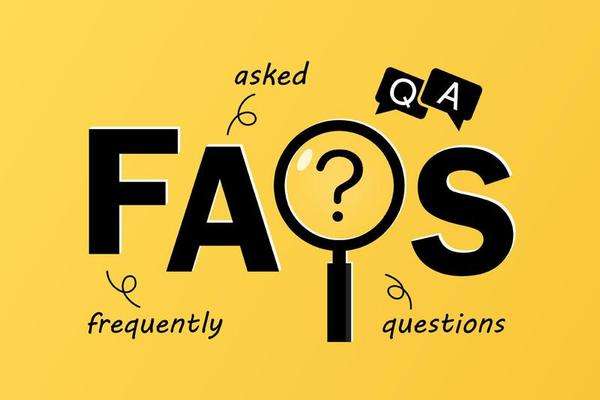
Frequently Asked Questions About Being a Digital Nomad in Edinburgh
What is the cost of living in Edinburgh?
The cost of living in Edinburgh is relatively high compared to other cities in Scotland, but lower than London. Expect to pay more for accommodation, especially in the city center.
Is Wi-Fi widely available in Edinburgh?
Yes, Wi-Fi is widely available in cafes, coworking spaces, and public areas throughout Edinburgh. Most accommodation options also provide free Wi-Fi.
What is the weather like in Edinburgh?
Edinburgh’s weather is unpredictable, with frequent rain and cool temperatures year-round. Be prepared for all seasons, and pack layers, a waterproof jacket, and comfortable shoes.
Can I use my foreign driving license in Edinburgh?
If you have a valid driving license from your home country, you can use it in Edinburgh. However, if you’re planning to stay long-term, you may need to exchange it for a UK license.
Are there any visa requirements for digital nomads in Edinburgh?
Visa requirements depend on your nationality. If you’re an EU citizen, you can stay in the UK without a visa for up to 90 days. Non-EU citizens may need a visa, depending on the length of their stay and the nature of their work.
What is the best time to visit Edinburgh?
The best time to visit Edinburgh is during the summer months (June to August) when the weather is warmer, and the city’s festivals are in full swing. However, this is also the busiest time of year, so be prepared for crowds.
Is Edinburgh safe for solo travelers?
Yes, Edinburgh is generally safe for solo travelers, including solo female travelers. The city has a low crime rate, and the locals are friendly and welcoming.
What are the best day trips from Edinburgh?
Some of the best day trips from Edinburgh include visiting the Scottish Highlands, the Isle of Skye, St Andrews, and North Berwick. These destinations offer stunning scenery, historic sites, and unique experiences.
What are the best coworking spaces in Edinburgh?
Some of the best coworking spaces in Edinburgh include The Melting Pot, CodeBase, Spaces, Tribe Porty, and Wework. Each offers a range of amenities and a supportive community for digital nomads.
How can I meet other digital nomads in Edinburgh?
Joining local Meetup groups, attending coworking spaces, and participating in networking events are great ways to meet other digital nomads in Edinburgh. Social media platforms and online communities can also help you connect with like-minded individuals.
What’s the public transportation like in Edinburgh?
Edinburgh has an excellent public transportation system, including buses and trams that cover most areas of the city. The buses are frequent and reliable, while the tram service is a convenient option for traveling between the city center and the airport.
What are the must-see attractions in Edinburgh?
Some must-see attractions in Edinburgh include Edinburgh Castle, the Royal Mile, Arthur’s Seat, the National Museum of Scotland, and Calton Hill. Each of these sites offers a unique glimpse into the city’s rich history and culture.
Is it easy to find vegetarian or vegan food in Edinburgh?
Yes, Edinburgh has a wide range of vegetarian and vegan dining options. From dedicated vegetarian restaurants like Hendersons to cafes and eateries offering vegan dishes, you’ll find plenty of choices to suit your dietary preferences.
Can I rent a bike in Edinburgh?
Yes, you can rent a bike in Edinburgh. The city is becoming more bike-friendly, with dedicated lanes and bike-sharing schemes like Just Eat Cycles. Cycling is a great way to explore the city and its surroundings.
What is the healthcare like in Edinburgh?
Edinburgh has a high standard of healthcare, with both public and private options available. If you’re staying long-term, it’s a good idea to register with a local GP. For short visits, travel insurance that covers medical expenses is recommended.
How do I find accommodation in Edinburgh?
Accommodation in Edinburgh can be found through various platforms such as Airbnb, Booking.com, and local letting agencies. Whether you’re looking for a short-term rental or a longer stay, it’s best to book in advance, especially during peak seasons.
Are there any cultural events I should attend in Edinburgh?
Edinburgh is famous for its festivals, with the Edinburgh Festival Fringe and the Edinburgh International Festival being the most notable. Other events include Hogmanay (New Year’s celebrations), the Edinburgh International Book Festival, and the Royal Edinburgh Military Tattoo.
Is English the only language spoken in Edinburgh?
While English is the primary language spoken in Edinburgh, you’ll also hear Scots and Gaelic in some areas. Most residents speak English, so communication shouldn’t be an issue for visitors.
Can I work remotely in cafes in Edinburgh?
Yes, many cafes in Edinburgh are remote-work friendly, offering free Wi-Fi and a comfortable atmosphere. Some popular spots for digital nomads include Brew Lab, Thomas J. Walls Coffee, and The Milkman.
How can I stay connected with friends and family back home?
Staying connected with friends and family back home is easy in Edinburgh, thanks to widespread internet access and mobile network coverage. You can use apps like WhatsApp, Skype, or Zoom to stay in touch, and international calling cards are also available.
What are the best neighborhoods to live in as a digital nomad?
Some of the best neighborhoods to live in as a digital nomad in Edinburgh include the Old Town, New Town, Leith, West End, and Southside. Each area offers a unique vibe, with plenty of amenities, cafes, and coworking spaces.
Is Edinburgh a good base for exploring the rest of Scotland?
Yes, Edinburgh is an excellent base for exploring the rest of Scotland. The city’s central location and well-connected transport links make it easy to take day trips to places like the Highlands, Loch Lomond, and the Isle of Skye.
How much does it cost to live in Edinburgh?
The cost of living in Edinburgh varies depending on your lifestyle and accommodation choices. On average, you can expect to spend more on rent and dining out compared to other parts of Scotland, but it’s still more affordable than London.
What should I pack for a trip to Edinburgh?
When packing for a trip to Edinburgh, bring layers, a waterproof jacket, comfortable walking shoes, and an umbrella. The weather can be unpredictable, so it’s best to be prepared for rain and cooler temperatures.
What’s the nightlife like in Edinburgh?
Edinburgh has a lively nightlife scene, with a range of pubs, bars, clubs, and live music venues. Whether you’re into traditional Scottish music, jazz, or dance clubs, you’ll find plenty of options to enjoy a night out in the city.
Can I drink tap water in Edinburgh?
Yes, tap water in Edinburgh is safe to drink. In fact, Scotland is known for having some of the purest tap water in the world, so there’s no need to buy bottled water.
Is it easy to find Wi-Fi in public places in Edinburgh?
Yes, Wi-Fi is widely available in public places such as cafes, restaurants, libraries, and even some public parks. Most accommodation options also provide free Wi-Fi for guests.
What’s the shopping scene like in Edinburgh?
Edinburgh offers a diverse shopping scene, from high-end boutiques and department stores on Princes Street and George Street to independent shops and markets in the Grassmarket and Leith. The city also has several shopping centers, including the St James Quarter.
Is tipping expected in Edinburgh?
Tipping in Edinburgh is appreciated but not always expected. In restaurants, a tip of 10-15% is customary if service isn’t included in the bill. Tipping in cafes, bars, and taxis is also common, though rounding up the fare is often sufficient.

Final Thoughts About Being a Digital Nomad in Edinburgh
Edinburgh is a fantastic destination for digital nomads, offering history, culture, and modern amenities. The city’s tech scene, numerous coworking spaces, and welcoming locals make it an ideal place to work remotely while exploring all that Scotland has to offer.
While the cost of living and unpredictable weather may be considerations, Edinburgh’s charm, safety, and scenery more than makeup for these challenges. Whether you’re planning to stay for a few weeks or a few months, Edinburgh has something to offer every digital nomad.
With its combination of historic sites, cultural events, and natural beauty, Edinburgh provides a unique and enriching experience for anyone looking to live and work in one of the world’s most captivating cities. So pack your bags, get ready to explore, and enjoy everything Edinburgh has to offer as a digital nomad!
Safe Travels!
